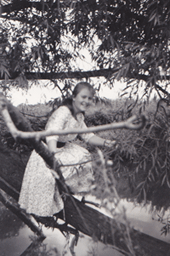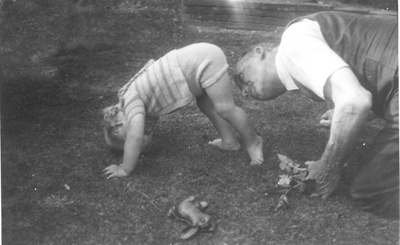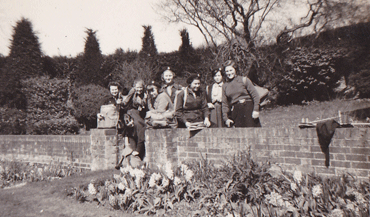
Here, Bridget talks about her own diagnosis in 1951, and how her father’s support guided her through childhood.
"Since I was diagnosed with Type 1 diabetes at nine, I’ve always accepted it head on, probably because my father had diabetes and it seemed part of everyday life.
I can’t recall the exact chain of events leading up to my diagnosis, but I know that at Christmas time I started to get up in the night to go to the toilet. This got progressively more frequent and I started to loose weight and become regualrly thirsty.
It was not until Easter time that I was put on insulin. Father said they did not want to jump to conclusions about me being diabetic, which is why it took so long for me to be treated.

My Father was very much his own doctor, but he also wanted to tap into the medical profession and find out as much as possible about the condition. He was fascinated by diabetes and was well read on the subject.
As a young girl (pictured,below, fourth along from left, and above, as a toddler playing 'peep-bo' with Father), I was lucky to have my dad to share my experiences with. I realise not everyone is fortunate enough to have someone at hand to talk about the everyday challenges of living with diabetes.

Growing up in the 1950s and 60s, you didn’t really talk about emotions like you do today. We talked about the logistics and how to get around a problem, but not about how it actually made you feel. Diabetes was part of our family life and I just ‘got on with it’. On a practical level, my father supported me enormously and would invest time in talking me through the practicalities.
The idea of injecting insulin every day didn’t scare me because I knew Father injected, ever since I can remember. Father taught me how to weigh carbohydrates against the weight of bread, which we always did on a pair of traditional metal scales – which I still have. If my father felt a hypo coming on, he would say he was feeling ‘squiffy’, which meant he needed something to eat – and quick.
When I was 11, I remember going away to girl guide camp for the first time. Father helped me pack a spare injection kit which he put in a sandwich tin. This included a tin with a roll of gauze, some sterilized scissors and spare surgical spirit, needles and glass syringe.
I remember I had to keep my syringes soaked in surgical spirit. I can still picture the glass syringe in a metal case lying diagonally across the tin, padded with gauze to keep it in place. The needles were kept in a separate metal case and I had to sterilise them with boiling water. In those days, you carried on using a needle until it really hurt – you would pull the needle across some gauze and if it caught, then you knew it was blunt.
Before going away on camp, I’d make a batch of gauze pieces and keep them in a small tin. My father was an expert in finding tins the right size, even if this meant buying things he did not want – he bought them just for the tin they were in. In those days, quite a lot of things were packaged in tins. Before injecting, I’d take a piece of gauze, dip it into some surgical spirit and then rub a spot on my skin before injecting.
At home, we always cooked food from scratch. My father grew his own vegetables on a small patch to the back of the house and on his allotment, and taught me about the importance of knowing what’s in your food. He hated ready-made sauces with a vengeance, because he didn’t have a clue what was in them and how they might affect his blood glucose levels.
Today I have my own allotment, grow my own vegetables and usually cook my own food. Father would be proud! He taught me everything I know about diabetes and his legacy lives on. We were particularly close – I think diabetes gave us an extra connection."
The next two instalments feature Bridget’s experiences with diabetes during motherhood and how her father’s legacy influences today.
